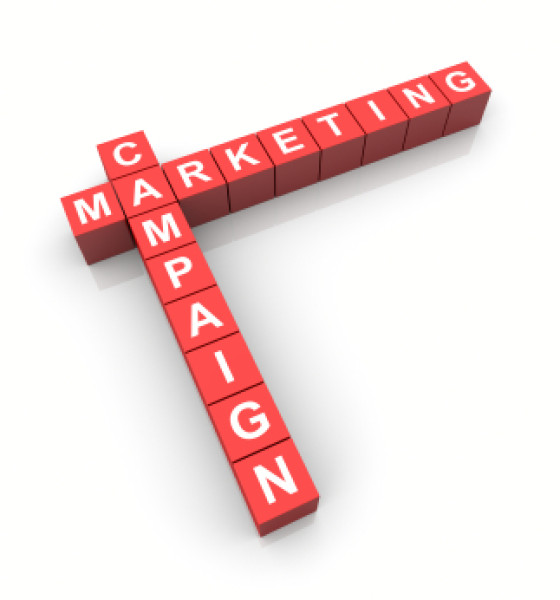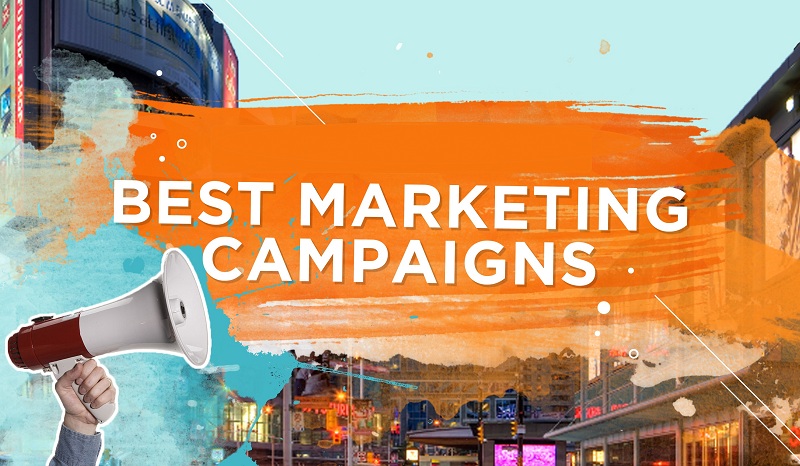Print marketing has given us a fantastic collection of iconic images and memorable slogans over many decades. But how can you use these lucrative marketing techniques to boost your profits?
To be in with a chance of creating a knock-out marketing campaign that’ll pull in customers and get your brand out there; Where the Trade Buys, a leading UK supplier of outdoor banner printing, has gathered the world’s best marketing campaigns to discover why these achieved such phenomenal success.
Nike
Top of our list, nearly everyone answers correctly when you ask which brand the ‘Just Do It’ slogan belongs to. Let’s take a look at how this iconic tagline came about.
During the late 1980s, Nike was on the hunt for an attention-grabbing marketing idea that could transform the brand’s profits — which were lagging far behind Reebok in shoe sales at the time. The famous ‘Just Do It’ slogan was soon seen on banners and billboards everywhere. Why? Because it was clear, concise and emotive. Can’t be bothered to run? Just do it. Don’t think you can handle an hour at the gym? Just do it. Within ten years of its launch, the campaign had boosted Nike sales from $800 million to $9.2 billion.

How to use it in your marketing campaign
Sometimes, all you need is a short and snappy slogan. Many believe that the ‘Just Do It’ campaign is an intricate strategy with lots of components — but it isn’t. The three-word ‘Just Do It’ slogan was seen on various banners depicting a range of sports people performing multiple exercises. The tagline, not the video or image, was the crux of the campaign.
Print platforms are ideal for displaying concise and emotive taglines. Using banners, posters and billboards means your slogan won’t vanish until it’s taken down, unlike video or other types of advertising. If you want this type of success, perhaps adopt this strategy by concentrating on a solid slogan — that encapsulates your brand and speaks directly to your core audience — and building out from there.
California Milk Processor Board
The Got Milk? campaign is a perfect example of how your company can use humour to advertise an idea or product. Got Milk? consists of images depicting celebrities with milk moustaches next to the tagline ‘Got Milk?’, the campaign boosted milk sales in California by 7% within its first year. The success of the campaign in the Golden State meant that the strategy started breaking borders, and soon Got Milk? posters and banners were spotted in stores and on highways across the country before moving to television and the internet.
How to use it in your marketing campaign
Got Milk? shows us that you don’t have to promote a fresh product to a brand-new audience to create a winning marketing campaign. Interestingly, the Got Milk? strategy wasn’t aimed at advertising milk to new customers — it targeted people who were already drinking it. If one of your products is dropping in sales, or a service you offer isn’t performing as well as before, your marketing strategy could be aimed at reconnecting with customers. The Got Milk? strategy is just one example of how even everyday items can be injected with humour (i.e. the milk moustache) and glamour (i.e. use of celebrities).
Volkswagen
Next up is Volkswagen’s ‘Think Small’ campaign, which launched at a time when large cars were the height of motoring fashion. During the 1960s, when ‘Think Small’ appeared, the US population only wanted big cars, and sales of small motors from German manufacturers were low. So, how could Volkswagen’s compact vehicles compete? By using marketing to play right into the audience’s hands.
Volkswagen created banners and newspaper ads with lots of white space to highlight the compact feature of its vehicles. So, when other car brands were packing their ads from border to border with copy, colour and imagery; Volkswagen stood apart from the crowd and was noticed for its ingenuity and honesty — its cars were small, and that’s what it told you.
How to use it in your marketing campaign
Advertisements, whether on TV or in a magazine, are rarely truly believed by audiences. Marketing is believed by most of us to put an unrealistic spin on reality to sell its customer a dream. Consequently, any brand that focuses on truth is sure to achieve credibility — resulting in a successful marketing campaign.
Absolut
Founded in the 19th century, Absolut’s marketing heyday is still applauded now. In essence, the Absolut strategy consisted of banners, billboards and ads portraying an Absolut bottle outline in various real images. This included a Christmas advert depicting a woman carrying stacks of gifts in a bottle formation (tagline: ‘Absolut 24th’) and an aerial shot of NYC’s Central Park shown with an added section at the top to create a bottle neck and cap shape (tagline: ‘Absolut Manhattan’).
But was this simple idea truly effective in achieving increased profits? Looking at the stats, it seems so. Absolut had less than 3% of the vodka market in the US. By the end, it was the brand-of-choice for half of all the country’s imported vodka. Amazingly, Absolut used this simple idea — shuffling around mundane objects and scenes to create a vague bottle outline — for more than 25 years.
How to use it in your marketing campaign
Absolut took a simple shape and turned it into a multi-million-pound success — and you can do the same. Study your products and see how you can incorporate the feel, look and shape of them into your campaign. Large outdoor banners and billboards offer the opportunity to capitalise on colours, textures and silhouettes, which makes turning something simple into something intriguing — pick your brand apart and diversify what you have.
Dove
Dove has long been a trusted personal care brand, but its 2004 marketing campaign won it praise and applause beyond its estimations. If you don’t recall the ad strategy, it consisted of a series of outdoor banners and ads that were designed around a social experiment, where an FBI-trained sketch artist was asked to draw two images of a woman — the first as she described herself and the second as a stranger described her. The outcome was that these images looked completely different, and Dove combined this result with the statistic that a mere 4% of women find themselves attractive to create a hugely successful marketing campaign that truly resonated with its audience.
As if this wasn’t interesting and illuminating enough, Dove went one step further to create its iconic marketing campaign. The brand chose to release a series of banners and billboards portraying regular women next to two checkboxes: one complimenting the woman and the other detailing a disparaging remark (e.g. ‘fat’ and ‘fit’ or ‘wrinkled’ and ‘wonderful’). The brand incited a debate about female beauty standards that went viral across digital media. Dove’s advertising strategy was insightful, inspiring and sensitive; encouraging women to see themselves in a different light. To date, Dove’s Real Beauty campaign has been seen in around 110 countries.
How to use it in your marketing campaign
Dove’s ‘Real Beauty’ campaign revolves around real women’s real problems — and it was only a success because the brand knew it’s audience and client base so well. So, study your target audience and find out what worries or pleases them. Then, build an idea around that. Dove focused on an issue concerning its key demographic and turned it into something positive, which not only helped women feel better about themselves, but also reflected positively on the brand.
The world of marketing is limitless when it comes to creativity. If you want to come up with something big to boost your brand and profits, let them inspire your next campaign.
Sources:
http://adage.com/lp/top15/#realbeauty
https://www.inc.com/issie-lapowsky/marketing-tips-got-milk.html
http://www.businessinsider.com/the-21-best-absolut-ads-2013-12?IR=T#13-absolut-manhattan-9












Comments